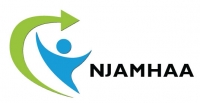National Drug and Alcohol Facts Week to Educate Youth and Promote Prevention
January 22, 2018
MERCERVILLE, NJ -The story of a New Jersey-born Pennsylvania State University fraternity pledge, who died from alcohol-related injuries in the beginning of last year, has been prominent in the news media for months, and now prosecutors are seeking criminal charges against fraternity members. Reports have indicated that Timothy Piazza, in what school officials called a "gross misuse" of alcohol during a "hazing ritual," consumed 18 alcoholic drinks during the 90 minutes prior to his deadly fall. According to the National Institute of Alcohol Abuse and Alcoholism, nearly 88,000 people die each year from alcohol-related causes; while drinking under the age of 21 is illegal, the Center for Disease Control and Prevention estimates that this age group drinks 11% of all alcohol consumed in the United States, and shockingly, 90% of that consumption is through binge drinking.
Every year, the National Institute on Drug Abuse (NIDA), one of the National Institutes of Health, releases a survey on substance use and attitudes among 8th, 10th, and 12th grade students from a cross-section of hundreds of schools across the United States. The most recent Monitoring the Future (MTF) survey, released in December 2017, shows the encouraging trend that past-year use of illicit drugs other than marijuana has held steady at its lowest level in more than two decades. Even while the opioid crisis tragically ravages the young adult and adult populations, 12th graders' use of prescription opioids has dropped significantly over the past five years. However, while it continues to fall or hold steady, this past year, daily marijuana use has exceeded daily cigarette use among 8th, 10th, and 12th graders. Even while teen binge drinking has declined in recent years, tragic incidences such as the death of Timothy Piazza remain all too common. In order to educate teens about the implications of alcohol and substance use, the NIDA hosts the National Drug and Alcohol Facts Week.
"With the teenage years being such a time for learning and turbulence in a person's life, it is important to educate the youth on risks associated with drug and alcohol use, and to dispel myths and misconceptions, so that young people are equipped with the information they need to make healthy choices in their lives," said Debra L. Wentz, Ph.D., President and CEO of the New Jersey Association of Mental Health and Addiction Agencies, Inc. (NJAMHAA). "We know that teen drug and alcohol use has mostly tended to decline in recent years, which means that young people are paying attention and awareness-raising initiatives like National Drug and Alcohol Facts Week are working."
The National Drug and Alcohol Facts Week (NDAFW) is an annual health observance, taking place January 22-28, and this year's theme calls on advocates to "Shatter the Myths" about drugs. The NDAFW website, found at https://teens.drugabuse.gov/national-drug-alcohol-facts-week, includes promotional tools and resources for the observance, including booklets, event ideas, and planning guides. Schools and organizations participate in the observance by planning awareness-raising events and activities, and registering them through the NDAFW website.
NJAMHAA is a trade association representing 160 New Jersey community-based providers of behavioral healthcare services, which can be found in every county statewide and serve 500,000 individuals each year, including teens. Several NJAMHAA member agencies work with local school districts to provide behavioral health services to vulnerable children and youth, some of whom struggle with addiction. The NJAMHAA members who are hosting events during NDAFW are the New Bridge Medical Center, with a teens-centered program on decision-making, refusal skills, and protective factors, and Preferred Behavioral Health Group of New Jersey, with a day of fun educational activities aimed at shattering drug myths. Others will participate in social media campaigns to disseminate information.
Surveys such as the MTF demonstrate that teens' attitudes and behaviors with regard to drugs are constantly changing. Given that adolescence is the age when people are most likely to take dangerous risks, and the vast negative impacts teen alcohol and drug use can have on brain development, initiatives like NIDA's NDAFW are essential to help youths gain an accurate understanding of substance use and promote prevention.
A full listing of NDAFW events can be found on: https://teens.drugabuse.gov/national-drug-alcohol-facts-week/view-events-and-highlights/map (scroll down to view events in New Jersey).
According to the Partnership for Drug-Free Kids, many symptoms of teenage substance abuse can be mistaken for typical adolescent behavior, which is why it is critical for parents to be attentive to their teenage children and to be prepared to have difficult conversations about drugs and alcohol. Some suspicious signs include: secretive behaviors, recklessness, problems with money, changes in sleep patterns or energy levels, mood shifts, problems with focus and motivation, hygiene issues, and mental and physical health symptoms such as depression, dramatic weight gain or loss, accidental injuries, vomiting, and/or many other potential red flags.
While NDAFW is a good place to begin discussions with teens about the myths and realities around substance use, these conversations need to be reinforced throughout the year. If a young person is struggling with substance use, local treatment providers can be found at //njamhaa.org/njamhaa-member-directory.


